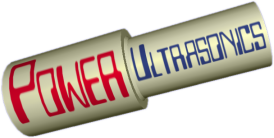Not an article as such, but hopefully of interest to readers...
Since the early 1980's, piezo-electric transducers have dominated the power ultrasonics industry. After some early reliability problems (cured largely by improvements to the electronic control systems used to drive them) they have now almost completely replaced the old inefficient laminated nickel alloy transducers wrapped in coils of PTFE insulated wire (the heat generated would melt conventional plastic insulation!).
ETREMA plans to change all that, with their new ultrasonic transducers based on Terfenol D®.
This is a special magneto-strictive iron alloy which tolerates high strains. It has been available for many years but only from laboratory-scale production. Now full production brings larger sizes and much better pricing, plus laminated blocks to reduce eddy-current losses in high frequency systems. Their new 20 kHz, 6kW transducer handles more power than any other ultrasonic transducer I know, and they are promising something much bigger in the near future...
Watch this space!
Update August 2004 (still watching)
